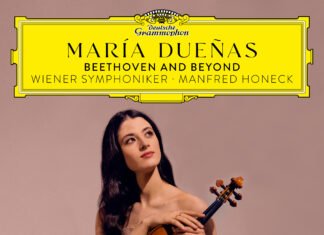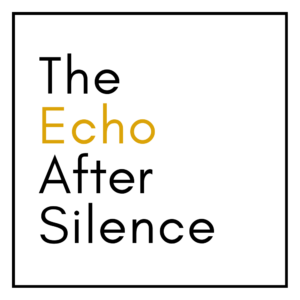Rachmaninov, Piano Concertos 2 & 4
Daniil Trifonov (piano)
The Philadelphia Orchestra
Yannick Nézet-Séguin (conductor)
Deutsche Grammophon, October 2018
When a piece of music is among your favourite works of all time, you run the risk of obsessively collecting most available recordings. This is the case here, for I have come to listen to most moderns recordings of the Rach 2 in the catalogue. This, in turn, means that I tend to become over-analytical when reviewing a new recording of the piece. The reader must, therefore, try to forgive the orderly manner of this review.
So how does the new Trifonov fare? A few quibbles aside, this is a no-nonsense, fine performance of both concertos characterised by a tame, no-risks-taken approach, that is bound to please those seeking a romantic rendition of these works.
Let’s start with the famous opening of the 2nd concerto. One can either take the bell-like chords in a fast and light manner (Hough comes to mind) or employ a more heavy-handed technique (Zimerman). Both ways can sound valid and both camps usually plunge right into the orchestral theme when the lush strings make their entrance, thus creating a dramatic effect (a visual analogy that could work for some at this point is that of a ship entering a stormy, misty voyage). And while many pianists opt for a powerful statement when the strings enter, following that impressive chord progression, Trifonov sounds more cautious, understating the fusion between piano and the orchestra. In fact, the bell-sounding piano chords that usually underline the orchestral theme and rhythmically propel it forward can hardly be heard once the orchestral forces come into play (and perhaps the recording is to blame in this case).
And speaking of the orchestra, here we have the mighty Philadelphia under Yannick Nézet-Séguin, offering rich string textures that are perhaps lacking the dark Russian colours revealed in other recordings. In other words, Nézet-Séguin offers extreme clarity of textures, which at times is revealing, but what could be missing is a more full-bodied, darker string sound (this can either be good or bad, depending on how you like your Rach). Having said that, the level of detail is exceptional – have a listen, for example, to how Nézet-Séguin observes the timpani at 2:11 in the first movement.
Despite the lean orchestral clarity it is surprising to hear that the piano is not always as audible as it should be. As an example, I mentioned the piano’s subdued accompaniment when the orchestra enters and this also seems to be the case at the orchestral crescendo beginning at 6:29, again in the first movement. Where Zimerman hammers away at the keys, Richter is colossal and Tharaud and Buniatishvili simply ravishing (to mention some more recent contenders), Trifonov, is swamped by the orchestra. (Indeed in many occasions, I’ve felt that the engineering should have emphasised the piano just a bit more.) As for the recapitulation itself that follows, both conductor and pianist slow down and let it expand gracefully.
The second movement requires some exceptional string playing and here the orchestra is indeed on top form. (Still, for a more lyrical approach it is hard to beat Francis/LSO for Lisitsa, Jarvi/Czech Philharmonic Orchestra for Buniatishvili – not to mention the legendary Previn/LSO and Haitink/RCO for Ashkenazy, even though it is hard to top the composer’s own rendition with Stokowski).
The finale fairs better, and in fact, I could say this is the highlight of this performance thanks to Trifonov’s sensitive rubato in this final movement. Just pay attention to how he handles the dynamics at the repetition of the second theme at 7:05. And when the great final tune arrives, it is taken at a very leisured tempo, with Nézet-Séguin observing the brass (some conductors simply ignore it). It has to be said that this drawn-out approach is the opposite of the composer’s own recording with Stokowski but I know people (including myself) who prefer this more romantic undertaking. One wishes Trifonov could make more of the closing chords, which here sound a bit too disciplined.
The 4th is an equally excellent performance even though I have some trivial observations. To begin with, there are moments where Trifonov relaxes his momentum, like at the passage around 5:46. And while the orchestra under Nézet-Séguin manages a remarkable buildup to the climax, at 6:50 the orchestral attacks don’t cut through as in other recordings, possibly due to the reverb and the recorded sound of the live recording.
Which brings me to the main issue (well, the only real issue) I have with this new rendition of the 4th: while the 2nd is a studio recording, the 4th is taken from live sessions at the at Kimmel Center, Philadelphia, and unfortunately this leads to some annoying audience noise and coughing (which has not been edited out) at some of the most crucial and quiet moments. A shame really because it can distract the listener from the overall enjoyment of the performance.
But leaving the audience noise aside, there is much to enjoy in this Rach 4: I cannot stress enough how the orchestra in this performance outshines some of the best in the competition. For instance, I don’t recall having heard before the brass so clearly at 5:10, here so dark and eerie, which in fact brought to my mind another equally eerie score: that of the Isle of the Dead.
And truth be told, the slow movement of the 4th is impressively mysterious while the finale offers some technically brilliant playing from Trifonov.
So how to sum up? These are remarkable performances of two great concertos that need to be heard. While none of these would be my recommendation for a first choice, they are still solid middle-of-the-road approaches, the only drawback being that they are perhaps a bit too calculated. If you prefer your Rachmaninov with more edge-of-the-seat playing and lively tempi closer to the composer’s own performances, look elsewhere. Otherwise, this new release could do just fine and will surely impress newcomers to these amazing concertos.
Rating: **** (4/5)
Additional recommendations:
For both the 2nd and 4th: Wild/Horenstein on Chandos.
For the 2nd: Weissenberg/Karajan for me remains unique. Also recommended: Ashkenazy/Previn, Richter/Wislocki, Janis/Dorati, Ashkenazy/Previn.
Digital recordings: Zilberstein/Abbado (a noble approach), Zimerman/Ozawa (even though the piano is too-forward placed), Bronfman/Salonen (one of the best out there), Ashkenazy/Haitink, Lisitsa/Francis (amazing orchestral accompaniment), Andsnes/Pappano, Trpčeski/Petrenko and among the recent contenders the most impressive of all is perhaps Buniatishvili/Jarvi.
For the 4th: Michelangeli/Gracis, Lisitsa/Francis and Andsnes/Pappano (both of them are thrilling), Kocsis/De Waart.








You make a good point concerning the deficiencies of the recording. I have only listened to the performance of the 2nd and notice that there is little front to back perspective. While the sound is warm and in no way harsh, it sounds like the piano and orchestra are bunched up together, and, as you say, the piano often gets swamped. Listening briefly to the opening of the Matsuev/Gergiev recording on Mariinsky, the piano comes through far more clearly and you get a sense of what is missing in the Trifonov (though the Matsuev performance is problematic for other reasons).
[…] had high expectations from this release. Having been slightly disappointed with the recording of the Second and Fourth Concertos by the same forces, this time I thought […]
[…] had high expectations from this release. Having been slightly disappointed with the recording of the Second and Fourth Concertos by the same forces, this time I thought […]